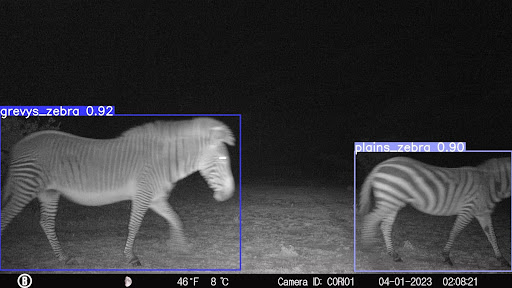Camera Trapping

Background
In recent years, camera traps have become an instrumental tool in ecological conservation and the scientific study of wildlife, especially with decline in biodiversity and wildlife populations. Camera traps are a non-intrusive means for conservationists to remotely monitor wildlife in their natural habitat. The images can be analysed using AI models to generate reports on populations. However, the pre-built solutions often fall short in accurately identifying rare species unique to specific regions. In partnership with Mugie Conservancy in Laikipia County, we are working on a project to build a model to detect rare and endangered species of animals localised to Northern Kenya.
Accomplishments
In the recent weeks, we have curated and annotated a few thousand images from the conservancy. We have also trained species detection models localised to the conservancy. Through iterative experimentation and optimization, our preliminary models are already showing promising results in accurately detecting target species within the images, demonstrating high precision and recall rates.
Next Steps
Looking ahead, our priority is to further enhance the capabilities and applicability of our model. This involves ongoing data collection and curation efforts to continuously enrich our dataset with diverse examples of our target species in diverse environmental conditions. Additionally, we will explore different machine learning approaches with the aim of improving our model's adaptability to new species and environments. Collaborating closely with conservationists from the conservancy, we aim to develop a comprehensive report generation pipeline and also integrate real-time deployment functionalities, enabling on-the-ground monitoring of species populations. By tailoring our solution to the unique context of our region, we aspire to make significant strides in wildlife conservation and ensure the long-term survival of our precious biodiversity.